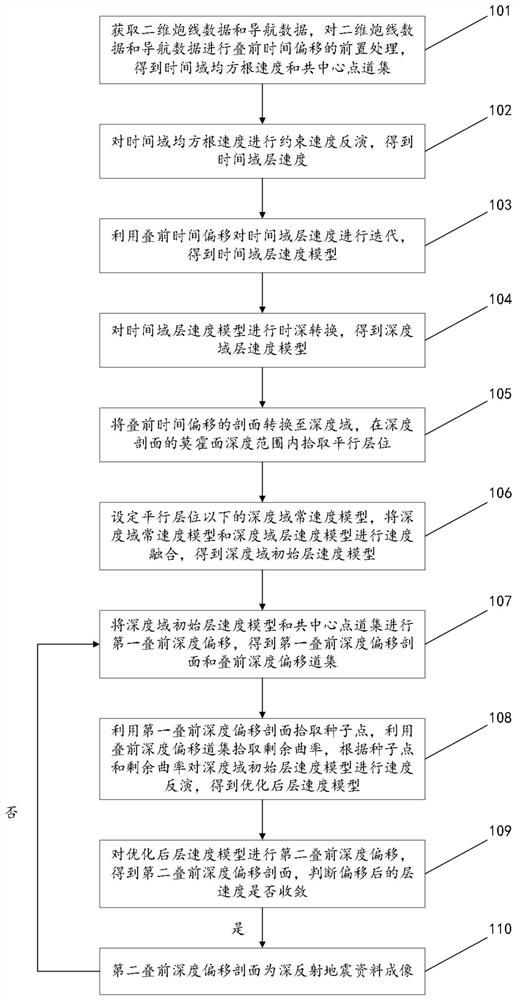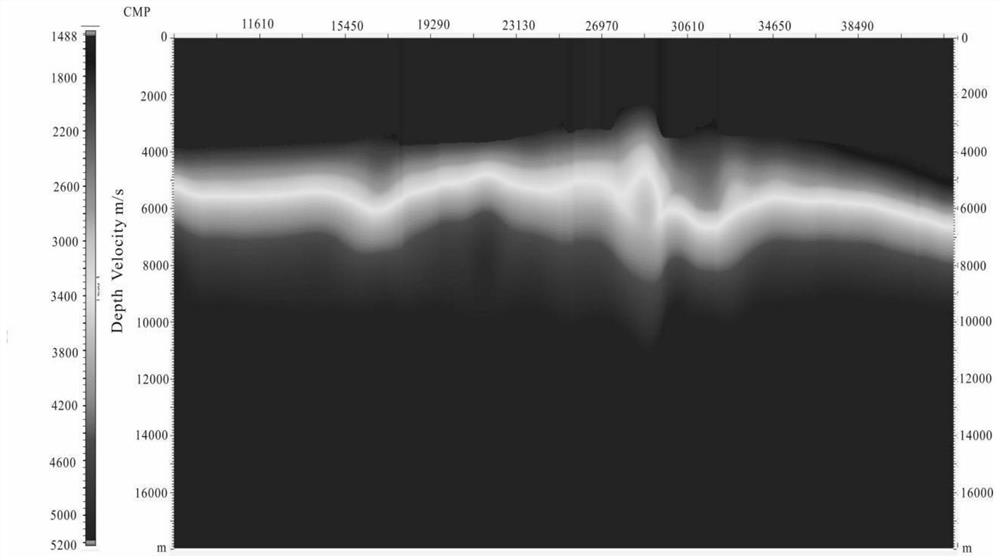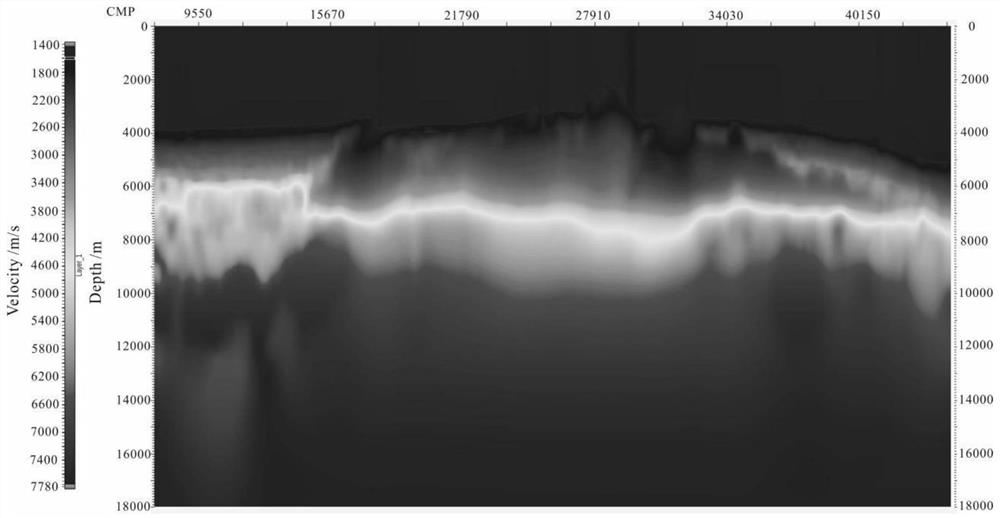Method for improving imaging precision of deep reflection seismic data
A technology of seismic data and deep reflection, applied in seismic signal processing and other directions, can solve the problems of ignoring the lateral change of velocity and the accuracy error of rock structure imaging, and achieve the effect of improving the accuracy and eliminating the error.
- Summary
- Abstract
- Description
- Claims
- Application Information
AI Technical Summary
Problems solved by technology
Method used
Image
Examples
Embodiment 1
[0066] figure 1 It is a schematic flowchart of Embodiment 1 of the method for improving the imaging accuracy of deep reflection seismic data shown in the embodiment of the present application;
[0067] figure 2 is a schematic diagram of the velocity model of the depth domain layer after time-to-depth conversion shown in the embodiment of the present application;
[0068] image 3 is the schematic diagram of the optimized layer velocity model shown in the embodiment of the present application;
[0069] Figure 4 It is a schematic diagram of deep reflection seismic data imaging shown in the embodiment of the present application.
[0070] see Figure 1-4 , the first embodiment of the method for improving the imaging accuracy of deep reflection seismic data in the embodiment of the present application includes:
[0071] 101. Acquire two-dimensional shot line data and navigation data, perform pre-stack time migration preprocessing on the two-dimensional shot line data and na...
Embodiment 2
[0096] In practical applications, on the basis of Embodiment 1, this embodiment details how to fuse the velocity of the depth domain constant velocity model and the depth domain layer velocity model to obtain the depth domain initial layer velocity model.
[0097] Figure 5 This is a schematic flowchart of Embodiment 2 of the method for improving the imaging accuracy of deep reflection seismic data shown in the embodiment of the present application;
[0098] Image 6 is a schematic diagram of the velocity model of the first depth domain layer shown in the embodiment of the present application;
[0099] Figure 7 is a schematic diagram of the first depth domain constant velocity model shown in the embodiment of the present application;
[0100] Figure 8 is a schematic diagram of the velocity model of the first fusion layer shown in the embodiment of the present application;
[0101] Figure 9 is a schematic diagram of the velocity model of the second depth domain layer s...
Embodiment 3
[0123] In practical applications, on the basis of the above embodiments, this embodiment introduces in detail how to obtain the optimized layer velocity model.
[0124] Figure 12 This is a schematic flowchart of Embodiment 3 of the method for improving the imaging accuracy of deep reflection seismic data shown in the embodiment of the present application;
[0125] Figure 13 are schematic diagrams of residual curvature profiles of different resolutions shown in the embodiments of the present application;
[0126] Figure 14 It is a schematic diagram of picking seed points on the first pre-stack depth migration profile shown in the embodiment of the present application.
[0127] see Figure 3-4 Immediately Figure 12-14 (in, Figure 12 The resolution and the residual curvature in the middle are increased in sequence from top to bottom), the third embodiment of the method for improving the imaging accuracy of deep reflection seismic data in the embodiment of the present a...
PUM
 Login to View More
Login to View More Abstract
Description
Claims
Application Information
 Login to View More
Login to View More - R&D
- Intellectual Property
- Life Sciences
- Materials
- Tech Scout
- Unparalleled Data Quality
- Higher Quality Content
- 60% Fewer Hallucinations
Browse by: Latest US Patents, China's latest patents, Technical Efficacy Thesaurus, Application Domain, Technology Topic, Popular Technical Reports.
© 2025 PatSnap. All rights reserved.Legal|Privacy policy|Modern Slavery Act Transparency Statement|Sitemap|About US| Contact US: help@patsnap.com



